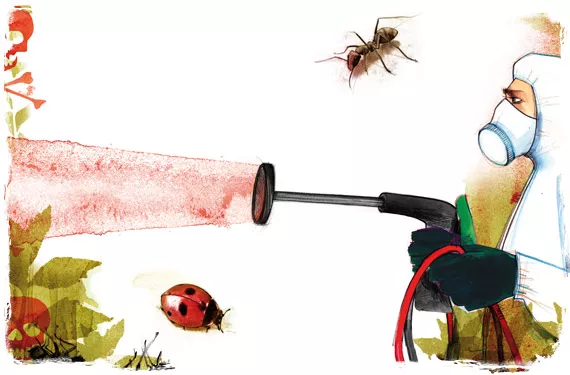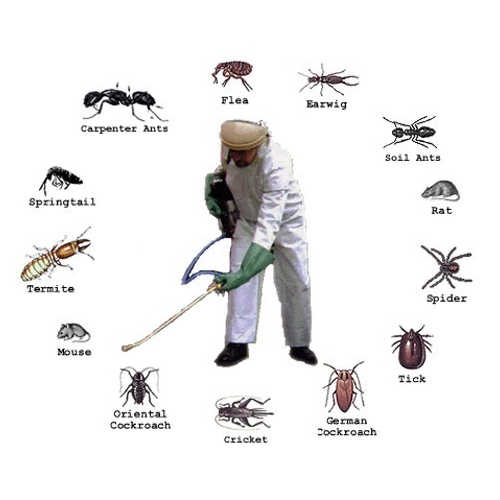Back to: Pre Vocational Studies Primary 5
Welcome to class!
Hello, my bright student! I’m so glad you’re back for another important lesson. Today, we’re going to talk about “control of insect pests.” We’ve learned how these tiny creatures can cause big problems for farmers, so now we’ll learn about the different ways to manage and control them. It’s like protecting yourself from mosquitoes by using mosquito nets or repellent. Let’s begin!
Control of Insect Pests

Controlling insect pests is a very important part of farming and gardening. There are many different methods that farmers and gardeners use to manage these pests and prevent them from damaging crops. These methods can be grouped into several categories:

- Cultural Control: These methods involve changing farming practices to make the environment less favorable for pests.
- Crop Rotation: Planting different crops in the same field each year can disrupt the life cycles of many insect pests. It’s like changing your routine so that mosquitoes don’t know when to expect you.
- Intercropping: Planting different crops together can also confuse pests and make it harder for them to find their preferred host plant.
- Proper Sanitation: Removing crop residues and weeds from the field can eliminate hiding places and breeding grounds for pests. It’s like cleaning your house to remove places where cockroaches can hide.
- Planting Time: Planting crops at the right time can help them to avoid peak pest activity periods.
- Physical or Mechanical Control: These methods involve physically removing or preventing pests from reaching crops.
- Handpicking: This involves removing insects by hand, which can be effective for larger insects like caterpillars.
- Traps: Different types of traps can be used to capture insects. For example, sticky traps can be used to catch flying insects.
- Barriers: Physical barriers like nets or screens can be used to prevent insects from reaching crops.
- Biological Control: This method involves using natural enemies of pests to control them.
- Natural Predators: Introducing natural predators like ladybugs, lacewings, or parasitic wasps can help to control pest populations. These beneficial insects eat or parasitize the pests.
- Microbial Control: Using microorganisms like bacteria, fungi, or viruses that are harmful to pests but not to crops or humans.
- Chemical Control: This method involves using insecticides (chemicals that kill insects) to control pests.
- Insecticides: Insecticides can be very effective, but they should be used carefully to avoid harming beneficial insects, the environment, and human health. It’s important to choose the right insecticide for the specific pest and to follow the instructions on the product label carefully.
- Resistant Varieties:
- Planting resistant varieties: Some crop varieties are naturally resistant to certain insect pests. Planting these varieties can help to reduce pest problems.
Integrated Pest Management (IPM):

Often, the most effective approach is to use a combination of different control methods. This is called Integrated Pest Management (IPM). IPM aims to control pests effectively while minimizing the negative impacts on the environment and human health.
Let’s use an example. A vegetable farmer might use crop rotation by planting tomatoes one year and then planting beans the next year. They might also use nets to protect their vegetables from insects. If necessary, they might use a small amount of a safe insecticide to control a specific pest problem.
So, to summarize, there are many different ways to control insect pests, including cultural control, physical or mechanical control, biological control, chemical control, and using resistant varieties. Often, the best approach is to use a combination of these methods in an Integrated Pest Management (IPM) strategy.
Evaluation
- Can you name three methods of insect pest control?
- Can you explain what biological control is?
Excellent! You’re doing a fantastic job! I’m so proud of your learning.
We have come to the end of today’s class.
In the next class, we shall be talking about the sewing processes.
In case you require further assistance or have any questions, feel free to ask in the comment section below, and trust us to respond as soon as possible. See you in the next class!
